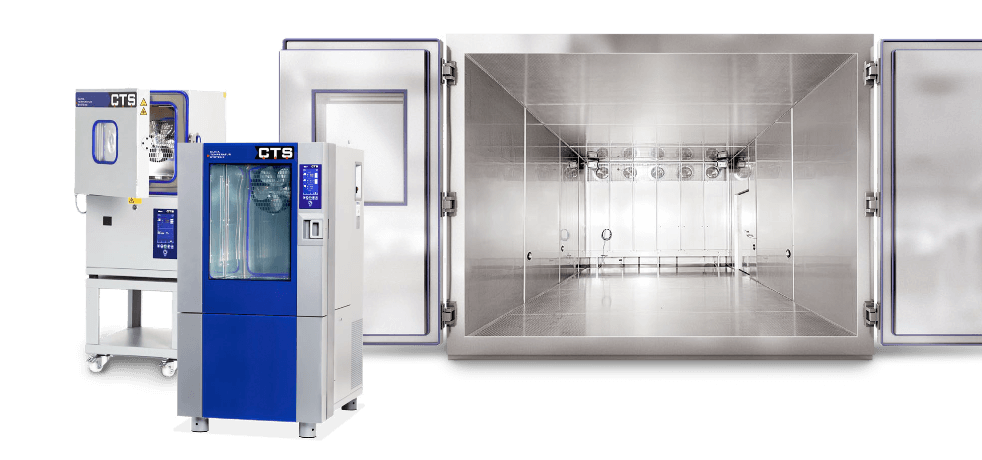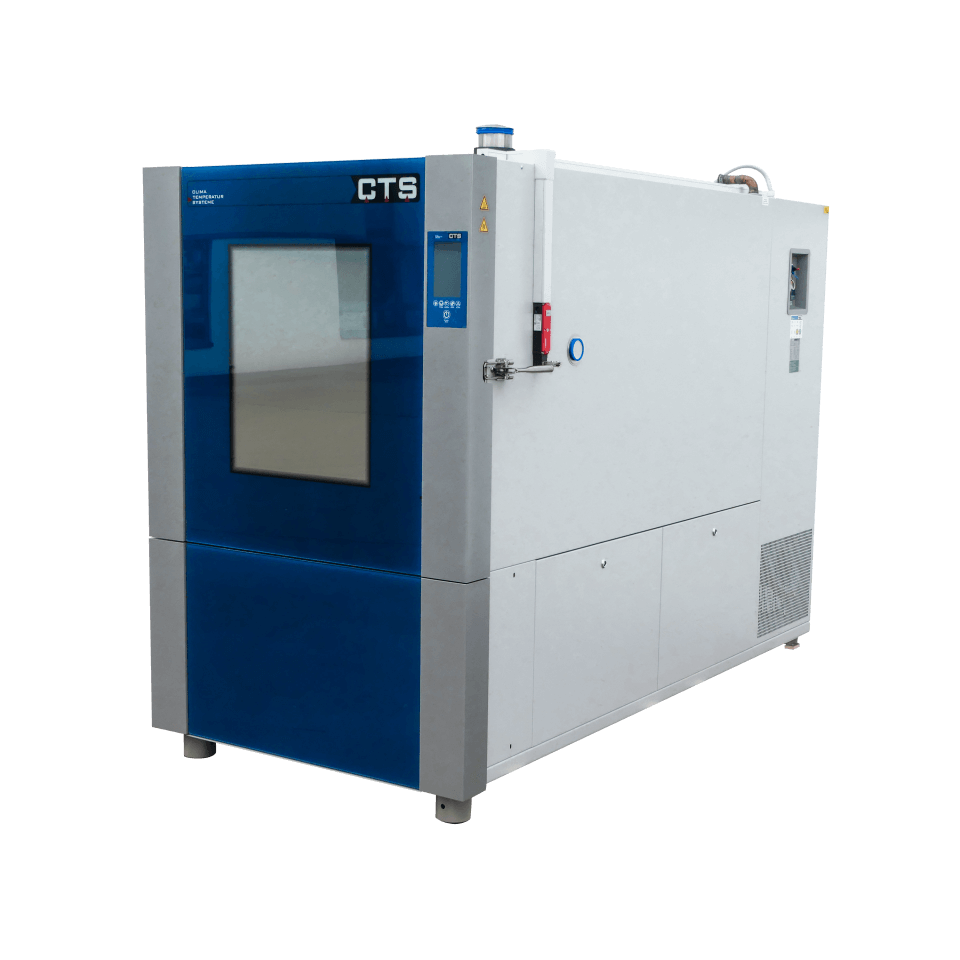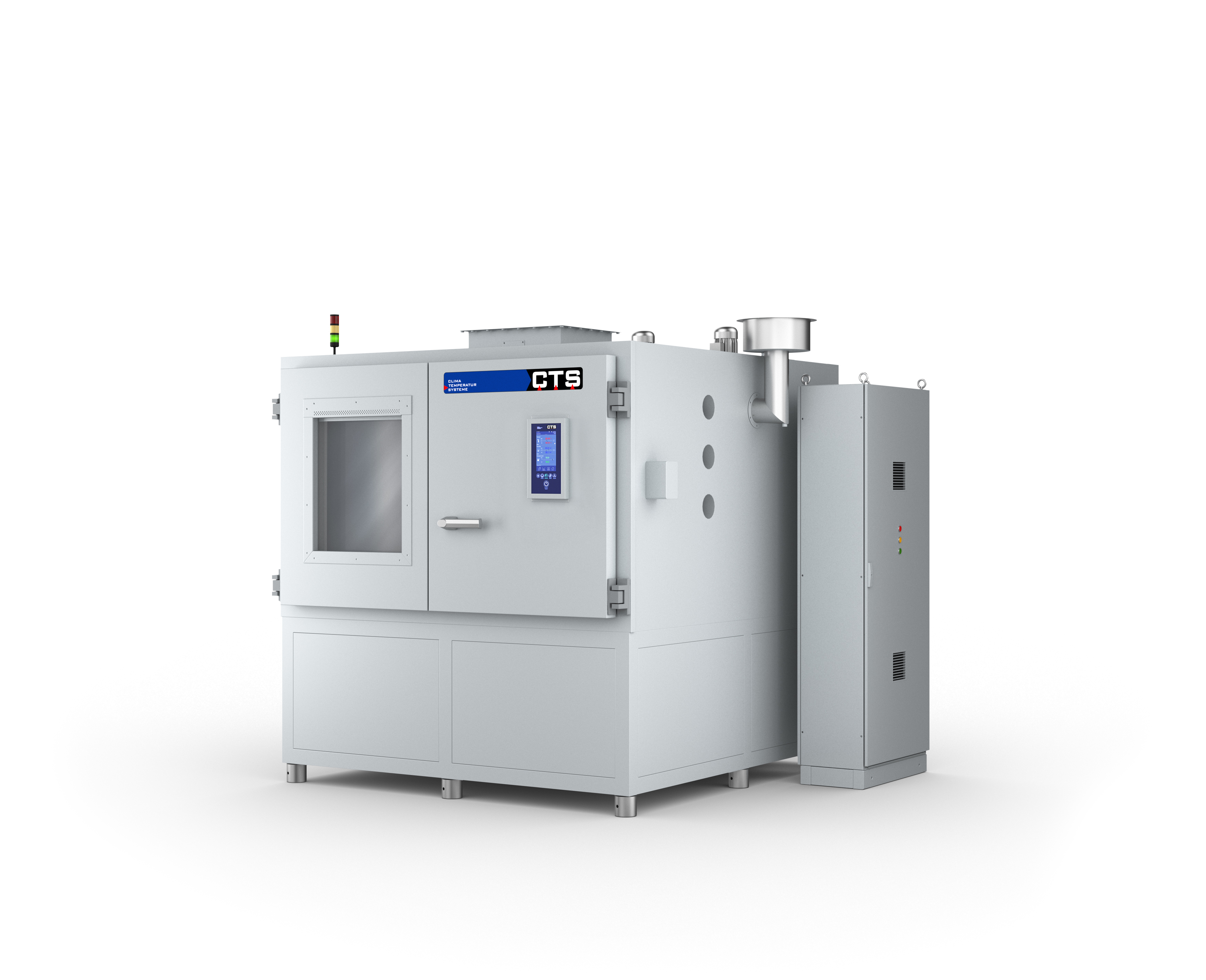Test cabinets and chambers for energy storage systems
Safe test systems from CTS Environmental Simulations
New drive systems such as hybrid technologies, battery electric vehicle (BEV) or fuel cell systems require special care when testing the energy storage systems or fuel cells. In order to test and prove the reliability, performance, safety and quality of the lithium-ion energy storage systems or fuel cells used in this process under climatic conditions, safe, reliable and sophisticated test systems are required. CTS offers a wide variety of solutions based on standard devices or test chambers as well as customised systems. Thus, we always place particular emphasis on planning and creating individual solutions for your specific application. Our proven safety devices, based on EUCAR Hazard Level classifications, can be selected and added to accordingly, depending on your company's internal hazard analysis, meaning that we can offer you a complete safety package tailored to your needs on request.
Our portfolio includes test equipment of different sizes and performance levels for testing
- battery cells
- battery modules
- battery packs
- peripheral systems such as inverters, BMSs, etc.
- fuel cells of different sizes and performance levels
- complete drive units using test parameters such as
- temperature and climatic test
- shock test
- combination with vibration tests
- immersion test, water splashing
- additional test parameters for e.g. ageing, performance or stress tests
Test space volume
Test chambers from >3 to 200 m3 and higher
Humidity ranges
Temperature ranges
-48°C / +180°C
-70°C / +180°C
Temperature change rates
Selection of the main equipment options for test chambers
- Electric door lock
- Independent temperature limiter Tmax
- Relief from pressure via a reversible flap
- CO measurement as fire detection
- Further gas measuring devices for e.g.: H2, CO2, HC
- Flushing devices in case of fire (e.g. CO2, N2, high-pressure water mist system, etc.)
- N2 inerting (permanent inerting) with O2 - measurement
- Overpressure relief via bursting diaphragm
- Design with increased media resistance
- Emergency stop
- Combination with water/glycol temperature control devices
Are additional safety equipment or measures required for anti-explosion protection in line with the ATEX directive? Talk to us: we also offer individual, sophisticated and smart solutions for this.





